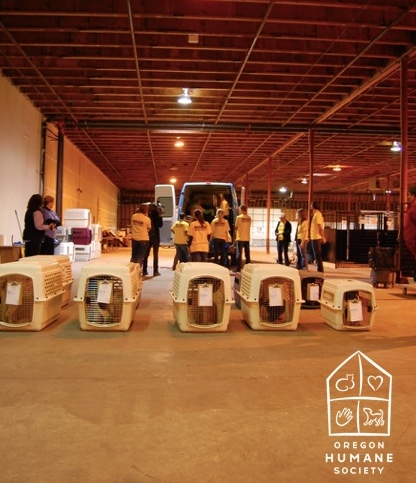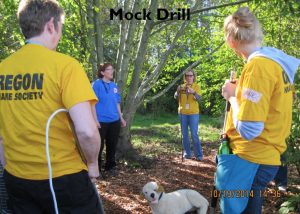News, ideas & inspiration from industry leaders

3 Tips for Growing a Robust Emergency Animal Sheltering Team
As part of our new Innovation Bank of short, pre-recorded webinars, every week we’ll be rolling out a brilliant idea from one of your colleagues in the field. This week we’re taking a closer look at Oregon Humane Society’s renowned Emergency Animal Sheltering team of staff and volunteers. Read these quick tips and be sure to watch the 30-minute presentation with OHS’ Jennifer Barta, CVA, Senior Manager of Volunteer Resources & Humane Education, and Lila Obeng, Investigations Coordinator.
Aim for a Well-Rounded Team
OHS’ Emergency Animal Sheltering team consists of long-term volunteers and staff working side by side. Drill down even further and you’ll find that includes a mix of managers and supervisors, as well as professional staff. Ideal team members, says Barta, exhibit 3 important characteristics:
- The ability to cope with mentally and physically challenging work
- The ability to be positive and take direction
- Willingness to learn the Incident Command System and fit into a structure
Keep ‘Em Engaged
It could be a year before a team member is deployed, so it’s important to keep interest high and skills fresh. To that end, OHS runs mock drills once or twice annually. Attendees spend half the day in the classroom, reviewing Incident Command System structure. For the second half, they’re broken into teams to work out a mock scenario—for example, “there’s a fire at one of our partner shelters, and 50 cats are on their way to us now.” The teams then work together to establish roles and create a plan of action. Bonus: Says Barta, “It also gives us a chance to see who is a natural leader, who can stay positive, who likes to really get involved.”

Ask Them to Share Their Stories
While deployed, OHS asks that individual team members take photos and complete a daily journal entry. Upon completion of their tour of duty, they’ll work together on a final team journal. OHS has found this is a great way to explain what an emergency animal sheltering operation is like for leadership, donors, team recruits, and others who are far removed from the situation. These materials are also invaluable for fundraising campaigns, and your media/marketing/comms teams can use them to tell the story of the important work you are doing.
Learn More
Watch the recording: “Emergency Animal Sheltering”
Blog: 4 Tips for Emergency Sheltering During COVID-19


